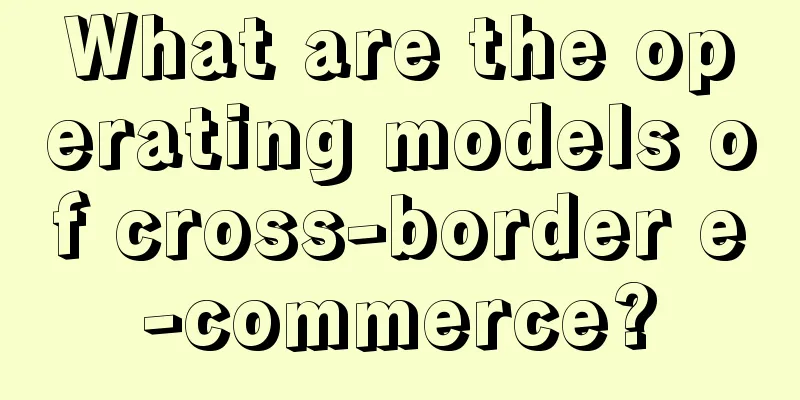What are the operating models of cross-border e-commerce?

|
Cross-border e-commerce has become an important part of international trade. It not only brings more product choices to consumers, but also opens up new market space for merchants. This article will explore several operating modes and business processes of cross-border e-commerce to help readers better understand the operating mechanism of this field. 1. What are the operating models of cross-border e-commerce? There are various operating modes of cross-border e-commerce, mainly including the following: B2B model: that is, the business-to-business model, which mainly conducts wholesale transactions with other companies and is the traditional model of cross-border e-commerce. B2C model: Enterprises sell products directly to consumers. This model allows consumers to purchase international goods directly and is a rapidly developing field in recent years. C2C model: transactions between consumers, such as cross-border personal transactions through platforms such as eBay. B2B2C model: Enterprises sell to consumers through third-party platforms, and the platforms provide market access, logistics, payment and other services. D2C model: Direct-to-Consumer, brands sell products directly to consumers through their own websites or apps. Social commerce: Combining social media and e-commerce functions to promote and sell products through social networks. Subscription e-commerce: Consumers pay a regular fee to obtain periodic goods or services. 2. What is the operating process of cross-border e-commerce? The operation process of cross-border e-commerce involves multiple links. The following are its basic steps: Market research: Study the needs, consumer habits and competitor situations of the target market. Product selection: Select products suitable for cross-border sales based on market research results. Supply chain management: Establish a stable supply chain to ensure product quality and timely delivery. Build an online store: Create an online store on an e-commerce platform or a self-built website to display and sell products. Logistics solutions: Choose the appropriate logistics method, such as direct mail, bonded warehouse, overseas warehouse, etc. Payment and Settlement: Provide multiple payment methods and handle cross-border settlement issues. Customs Clearance: Understand and comply with the import regulations and tariff policies of the target country. After-sales service: Provide return and exchange services to establish good customer relationships. Marketing promotion: Use SEO, social media, email marketing and other means to promote products. Data analysis: Collect and analyze sales data to continuously optimize business strategies. As an emerging form of international trade, cross-border e-commerce provides new opportunities for global consumers and merchants. Understanding its operating model and business process can help companies better enter this field. |
>>: Why don’t I want to do cross-border e-commerce anymore after working in it for half a month?
Recommend
Short and long videos in 2022
Under the influence of various cultures, short vid...
Long article review: 5 tips for successful incentive systems in 18 Internet benchmark products
How to keep users in the product as much as possib...
Go first and plan later, "advisory travel" has changed independent travel
Explore the novel model of "advisory travel&q...
When advertising on Xiaohongshu, please focus on these two indicators
In the marketing battlefield of Xiaohongshu, tradi...
How to open a local store on Amazon? Are there any advantages?
Many people want to open stores on the Amazon plat...
Method and process of building a data indicator system [Template + case]
It turns out that the construction method and proc...
2023 Tik Tok content ecosystem: “Newcomers” are king
The author of this article shared several Douyin “...
Are there any requirements for Amazon brand sellers? What are the characteristics?
On Amazon, if you want to open a store, you usuall...
Light IP, a complete guide from development to operation (Part 1)
What is a light IP? The author raises three questi...
For businesses with a large number of physical stores, Video Account may be your last chance to transform online
For businesses with many physical stores, digital ...
Fan circles save Chinese table tennis! Look at the capital situation behind Wang Chuqin and Sun Yingsha, and review the commercial development history of the national table tennis team
Is it a good thing or a bad thing that sports even...
How can brands create explosive social currency?
The author of this article introduces in detail th...
Which Amazon operation tool is better? Introduction to common tools
Amazon store operations include market, platform, ...
520 copywriting, focusing on a rebellious
520 is coming, and both those with and without a p...
How long does it take for Amazon to pay the buyer after the goods are delivered to the buyer? Is the payment fast?
When registering an Amazon seller account, you nee...









